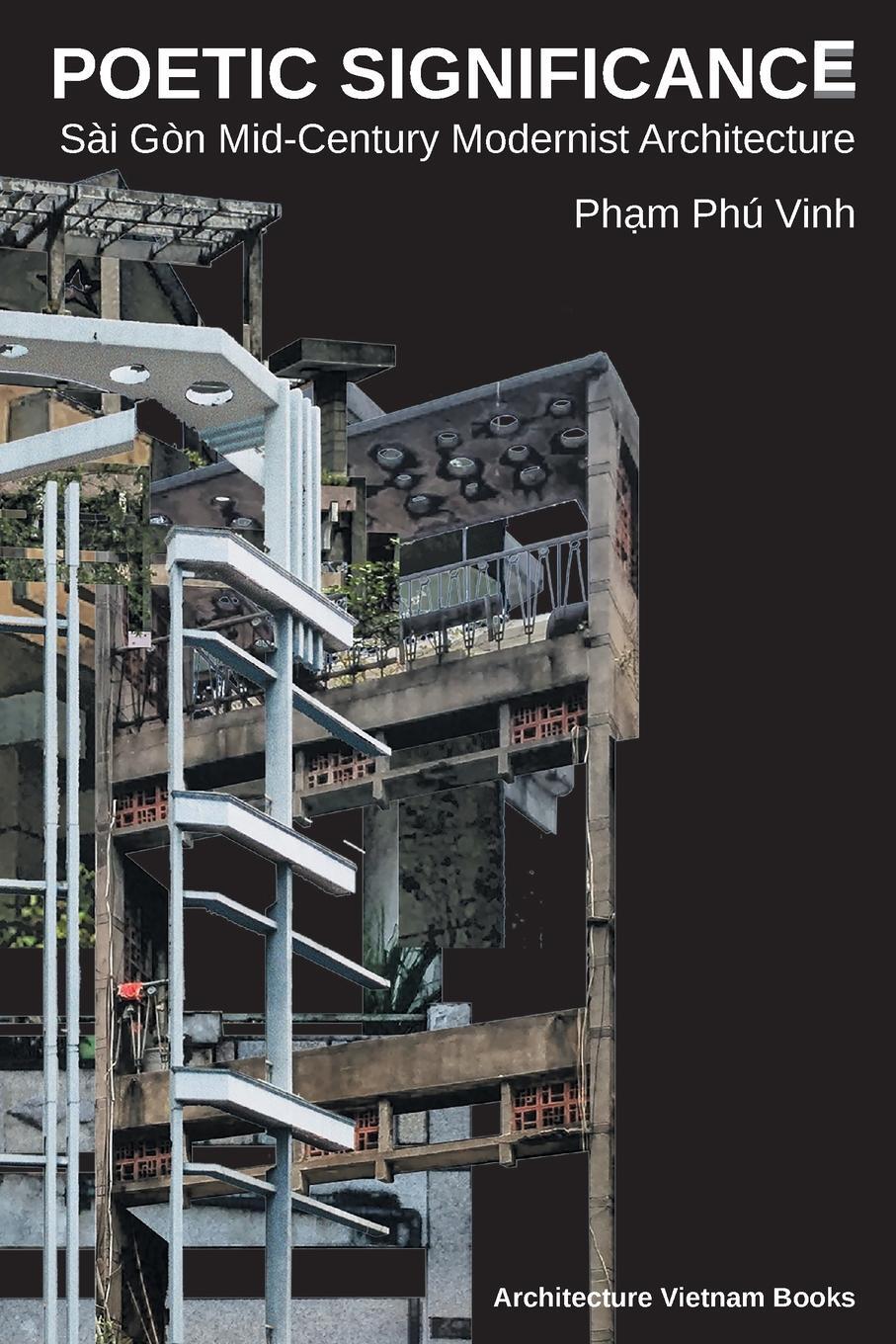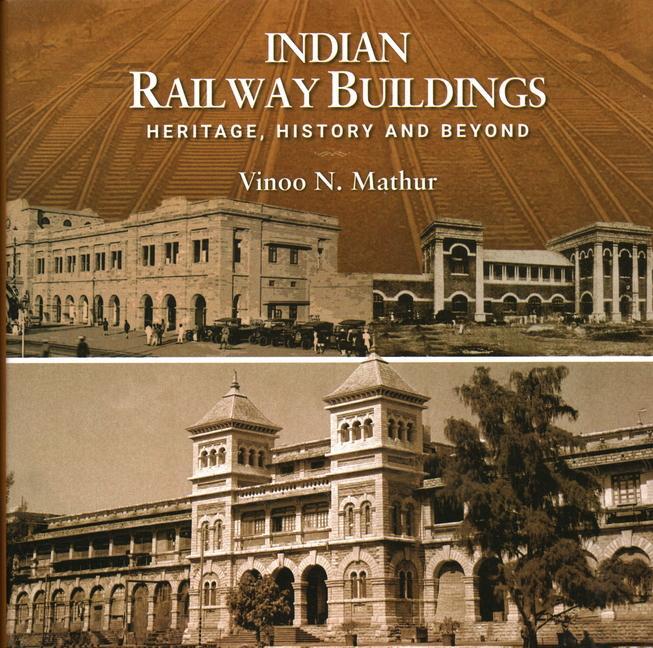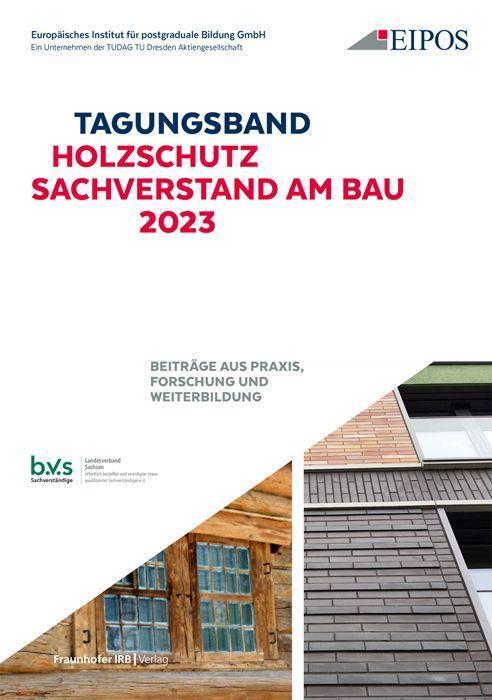Dekorationsartikel gehören nicht zum Leistungsumfang.
Sprache:
Englisch
25,80 €*
Versandkostenfrei per Post / DHL
Aktuell nicht verfügbar
Kategorien:
Beschreibung
"Poetic Significance" presents beautiful architectural photography, diagrams, and the history of the very rich and complex Vietnamese modernist architecture from the mid-century in Saigon, Vietnam. Vietnamese mid-twentieth-century modernist architecture made its way into the Vietnamese vernacular culture to be recreated and transformed by the ordinary people. Through their creations, this book tries to discern the modern architectural aesthetics of the Vietnamese people which reflects how the architecture of Vietnam, an ancient Southeast Asian culture, has appeared and developed in modern times.
When asked about Vietnamese architectural identity, most people would associate Vietnamese identity with the period before the French colonisation, comprising the traditional architecture of wooden communal houses or imperial palaces. That is widely accepted. But less known, yet more significant, is that this very same identity of Vietnamese authenticity has made its way into modern times, surviving colonialism to thrive again in a new material reality.
Vietnamese modernist architecture appeared in Saigon, the capital of South Vietnam during the Second Indochina War. It was a branch of modernism with a rich architectural vocabulary of various micro-climatic strategies. As a result, this architecture appears lighter, airier, more graceful and less monumental in comparison to global modernism. Unexpectedly, the ordinary Vietnamese people took this language and practiced it on their own in making their modernist shophouses. This created a modernist architecture without acknowledging it, and modernism then became a means, catalysed and enriched by the collectivity of the Vietnamese culture. It became a new tradition of building houses. And primary in this tradition is a distinctively vibrant and poetic taste.
In response to the rationality of global modernism, the Vietnamese people realised a new branch of modernism that is intensively dense, yet vibrant, rich, abstract and thoroughly poetic. It demonstrated a focus on the feelings and the spirituality that architecture can have.
This very special sensitivity of the Vietnamese people contrasted with global modernism. And this contrast is, in fact, the modern identity of Vietnamese architecture, rooted directly from Vietnamese traditional aesthetics. It deserves, therefore, a formal recognition and appreciation, especially domestically as globalisation raises questions of self-consciousness, authenticity and identity in Vietnam's society.
Those who study, practice architecture or who are interested in design, art, history and culture will find that this book shows how modernism came to be in Vietnam and how it has been adopted by the people directly as their new vernacular architecture. Through simple yet frequently-used architectural elements like louvers, planters, pergolas, handrails, brise-soleil, columns, beams, etcetera, the Vietnamese people have crafted artworks of an authentic taste and a strong identity. Readers will find this work helpful as a handbook that exposes a bright, but hidden example for the world of how architecture, art and culture co-exist in southern Vietnam, and how rationality and spirituality are intertwined into human creations.
When asked about Vietnamese architectural identity, most people would associate Vietnamese identity with the period before the French colonisation, comprising the traditional architecture of wooden communal houses or imperial palaces. That is widely accepted. But less known, yet more significant, is that this very same identity of Vietnamese authenticity has made its way into modern times, surviving colonialism to thrive again in a new material reality.
Vietnamese modernist architecture appeared in Saigon, the capital of South Vietnam during the Second Indochina War. It was a branch of modernism with a rich architectural vocabulary of various micro-climatic strategies. As a result, this architecture appears lighter, airier, more graceful and less monumental in comparison to global modernism. Unexpectedly, the ordinary Vietnamese people took this language and practiced it on their own in making their modernist shophouses. This created a modernist architecture without acknowledging it, and modernism then became a means, catalysed and enriched by the collectivity of the Vietnamese culture. It became a new tradition of building houses. And primary in this tradition is a distinctively vibrant and poetic taste.
In response to the rationality of global modernism, the Vietnamese people realised a new branch of modernism that is intensively dense, yet vibrant, rich, abstract and thoroughly poetic. It demonstrated a focus on the feelings and the spirituality that architecture can have.
This very special sensitivity of the Vietnamese people contrasted with global modernism. And this contrast is, in fact, the modern identity of Vietnamese architecture, rooted directly from Vietnamese traditional aesthetics. It deserves, therefore, a formal recognition and appreciation, especially domestically as globalisation raises questions of self-consciousness, authenticity and identity in Vietnam's society.
Those who study, practice architecture or who are interested in design, art, history and culture will find that this book shows how modernism came to be in Vietnam and how it has been adopted by the people directly as their new vernacular architecture. Through simple yet frequently-used architectural elements like louvers, planters, pergolas, handrails, brise-soleil, columns, beams, etcetera, the Vietnamese people have crafted artworks of an authentic taste and a strong identity. Readers will find this work helpful as a handbook that exposes a bright, but hidden example for the world of how architecture, art and culture co-exist in southern Vietnam, and how rationality and spirituality are intertwined into human creations.
"Poetic Significance" presents beautiful architectural photography, diagrams, and the history of the very rich and complex Vietnamese modernist architecture from the mid-century in Saigon, Vietnam. Vietnamese mid-twentieth-century modernist architecture made its way into the Vietnamese vernacular culture to be recreated and transformed by the ordinary people. Through their creations, this book tries to discern the modern architectural aesthetics of the Vietnamese people which reflects how the architecture of Vietnam, an ancient Southeast Asian culture, has appeared and developed in modern times.
When asked about Vietnamese architectural identity, most people would associate Vietnamese identity with the period before the French colonisation, comprising the traditional architecture of wooden communal houses or imperial palaces. That is widely accepted. But less known, yet more significant, is that this very same identity of Vietnamese authenticity has made its way into modern times, surviving colonialism to thrive again in a new material reality.
Vietnamese modernist architecture appeared in Saigon, the capital of South Vietnam during the Second Indochina War. It was a branch of modernism with a rich architectural vocabulary of various micro-climatic strategies. As a result, this architecture appears lighter, airier, more graceful and less monumental in comparison to global modernism. Unexpectedly, the ordinary Vietnamese people took this language and practiced it on their own in making their modernist shophouses. This created a modernist architecture without acknowledging it, and modernism then became a means, catalysed and enriched by the collectivity of the Vietnamese culture. It became a new tradition of building houses. And primary in this tradition is a distinctively vibrant and poetic taste.
In response to the rationality of global modernism, the Vietnamese people realised a new branch of modernism that is intensively dense, yet vibrant, rich, abstract and thoroughly poetic. It demonstrated a focus on the feelings and the spirituality that architecture can have.
This very special sensitivity of the Vietnamese people contrasted with global modernism. And this contrast is, in fact, the modern identity of Vietnamese architecture, rooted directly from Vietnamese traditional aesthetics. It deserves, therefore, a formal recognition and appreciation, especially domestically as globalisation raises questions of self-consciousness, authenticity and identity in Vietnam's society.
Those who study, practice architecture or who are interested in design, art, history and culture will find that this book shows how modernism came to be in Vietnam and how it has been adopted by the people directly as their new vernacular architecture. Through simple yet frequently-used architectural elements like louvers, planters, pergolas, handrails, brise-soleil, columns, beams, etcetera, the Vietnamese people have crafted artworks of an authentic taste and a strong identity. Readers will find this work helpful as a handbook that exposes a bright, but hidden example for the world of how architecture, art and culture co-exist in southern Vietnam, and how rationality and spirituality are intertwined into human creations.
When asked about Vietnamese architectural identity, most people would associate Vietnamese identity with the period before the French colonisation, comprising the traditional architecture of wooden communal houses or imperial palaces. That is widely accepted. But less known, yet more significant, is that this very same identity of Vietnamese authenticity has made its way into modern times, surviving colonialism to thrive again in a new material reality.
Vietnamese modernist architecture appeared in Saigon, the capital of South Vietnam during the Second Indochina War. It was a branch of modernism with a rich architectural vocabulary of various micro-climatic strategies. As a result, this architecture appears lighter, airier, more graceful and less monumental in comparison to global modernism. Unexpectedly, the ordinary Vietnamese people took this language and practiced it on their own in making their modernist shophouses. This created a modernist architecture without acknowledging it, and modernism then became a means, catalysed and enriched by the collectivity of the Vietnamese culture. It became a new tradition of building houses. And primary in this tradition is a distinctively vibrant and poetic taste.
In response to the rationality of global modernism, the Vietnamese people realised a new branch of modernism that is intensively dense, yet vibrant, rich, abstract and thoroughly poetic. It demonstrated a focus on the feelings and the spirituality that architecture can have.
This very special sensitivity of the Vietnamese people contrasted with global modernism. And this contrast is, in fact, the modern identity of Vietnamese architecture, rooted directly from Vietnamese traditional aesthetics. It deserves, therefore, a formal recognition and appreciation, especially domestically as globalisation raises questions of self-consciousness, authenticity and identity in Vietnam's society.
Those who study, practice architecture or who are interested in design, art, history and culture will find that this book shows how modernism came to be in Vietnam and how it has been adopted by the people directly as their new vernacular architecture. Through simple yet frequently-used architectural elements like louvers, planters, pergolas, handrails, brise-soleil, columns, beams, etcetera, the Vietnamese people have crafted artworks of an authentic taste and a strong identity. Readers will find this work helpful as a handbook that exposes a bright, but hidden example for the world of how architecture, art and culture co-exist in southern Vietnam, and how rationality and spirituality are intertwined into human creations.
Über den Autor
Ph¿m Phú Vinh, Designer and Writer.Ph¿m Phú Vinh is a Vietnamese architect who earned his Bachelor degree at the University of Architecture of Ho Chi Minh city and is currently pursuing his post-graduate study at the École Nationale Supérieure d'Architecture et de Paysage de Bordeaux in France. Like many people in the influx of population moving to Ho Chi Minh City for either education or job opportunities, he was taken by the modern, open, vibrant and intensive identity of the city. With a foundation of languages, including Vietnamese, English and French, a voracious interest in history as well as involvement in different art forms, including painting, photography, videography and graphic design, Vinh has found Ho Chi Minh city "fertile" for discoveries. Trips on a motorbike in this city were where he discovered the remarkable mid-century modernist architecture in Ho Chi Minh city. He came to appreciate it for the distinctive architectural language produced by the culture that is, however, oftentimes overlooked. In 2018, Vinh filmed and produced the video "Saigon modernism - Unique features" that mapped and exposed this neglected language of which the very urban landscape of Saigon is made. He has led many walks around the city to introduce Vietnamese modernist architecture to people. Vinh attended the Lê V¿n Mi¿n art market in 2018 where he presented his postcards showing Ho Chi Minh city's significant modernist buildings. His articles "Decoding the Language of Vietnamese Modernist Architecture" and "T¿ khi nào ki¿n trúc Vi¿t Nam tr¿ nên hi¿n ¿¿i - When did Vietnamese architecture turn modern?" were published by the magazines Saigoneer and Urbanist Vietnam on 17 August 2021 and 25 September 2020. Ph¿m Phú Vinh's featured projects and research can be found at [...]
Details
| Erscheinungsjahr: | 2021 |
|---|---|
| Genre: | Kunst |
| Rubrik: | Kunst & Musik |
| Thema: | Architektur |
| Medium: | Taschenbuch |
| Seiten: | 308 |
| ISBN-13: | 9781087943374 |
| ISBN-10: | 108794337X |
| Sprache: | Englisch |
| Ausstattung / Beilage: | Paperback |
| Einband: | Kartoniert / Broschiert |
| Autor: | Pham Phu Vinh |
| Hersteller: | Architecture Vietnam Books |
| Maße: | 210 x 140 x 19 mm |
| Von/Mit: | Pham Phu Vinh |
| Erscheinungsdatum: | 16.02.2021 |
| Gewicht: | 0,425 kg |
Über den Autor
Ph¿m Phú Vinh, Designer and Writer.Ph¿m Phú Vinh is a Vietnamese architect who earned his Bachelor degree at the University of Architecture of Ho Chi Minh city and is currently pursuing his post-graduate study at the École Nationale Supérieure d'Architecture et de Paysage de Bordeaux in France. Like many people in the influx of population moving to Ho Chi Minh City for either education or job opportunities, he was taken by the modern, open, vibrant and intensive identity of the city. With a foundation of languages, including Vietnamese, English and French, a voracious interest in history as well as involvement in different art forms, including painting, photography, videography and graphic design, Vinh has found Ho Chi Minh city "fertile" for discoveries. Trips on a motorbike in this city were where he discovered the remarkable mid-century modernist architecture in Ho Chi Minh city. He came to appreciate it for the distinctive architectural language produced by the culture that is, however, oftentimes overlooked. In 2018, Vinh filmed and produced the video "Saigon modernism - Unique features" that mapped and exposed this neglected language of which the very urban landscape of Saigon is made. He has led many walks around the city to introduce Vietnamese modernist architecture to people. Vinh attended the Lê V¿n Mi¿n art market in 2018 where he presented his postcards showing Ho Chi Minh city's significant modernist buildings. His articles "Decoding the Language of Vietnamese Modernist Architecture" and "T¿ khi nào ki¿n trúc Vi¿t Nam tr¿ nên hi¿n ¿¿i - When did Vietnamese architecture turn modern?" were published by the magazines Saigoneer and Urbanist Vietnam on 17 August 2021 and 25 September 2020. Ph¿m Phú Vinh's featured projects and research can be found at [...]
Details
| Erscheinungsjahr: | 2021 |
|---|---|
| Genre: | Kunst |
| Rubrik: | Kunst & Musik |
| Thema: | Architektur |
| Medium: | Taschenbuch |
| Seiten: | 308 |
| ISBN-13: | 9781087943374 |
| ISBN-10: | 108794337X |
| Sprache: | Englisch |
| Ausstattung / Beilage: | Paperback |
| Einband: | Kartoniert / Broschiert |
| Autor: | Pham Phu Vinh |
| Hersteller: | Architecture Vietnam Books |
| Maße: | 210 x 140 x 19 mm |
| Von/Mit: | Pham Phu Vinh |
| Erscheinungsdatum: | 16.02.2021 |
| Gewicht: | 0,425 kg |
Warnhinweis







